Elad Benjamin, MBA is VP and business leader of clinical data services at Philips of Amsterdam, Netherlands.

Tell me about yourself and the company.
I run a business within Philips called Clinical Data Services. We are responsible for integrating and delivering acute patient data to physicians, nurses, and any other caregivers who require it. We also provide analysis of that data to help with clinical insights and improvement of care.
I have been in healthcare informatics for the past 25 years in various roles around medical imaging, medical devices, radiology, and AI. I’ve been both on the entrepreneur side, having formed a few startups of my own, and also now on the larger corporate side within Philips for the last three years.
What progress has been made and what challenges remain for health systems to connect their own internal systems?
We have made a lot of progress within certain niches. For example, the medical imaging niche has made a lot of progress in being able to move and communicate medical images with each other. The medical device niche has made a lot of progress, such as with products that we have developed, in integrating medical devices and the data that comes out of those devices.
A gap remains between those silos. If a healthcare enterprise wants a full picture of a patient across imaging, acute general care, lab and other areas, the integration of all that data into one view still remains a bit of a gap. EMRs fill some of that gap, but not all. We still have a ways to go in helping enterprises bridge the gap between those different care settings of patients.
How well is that information made actionable for those on the front lines of patient care?
For some information, we have a relatively robust set of alarms and alerts that can be provided to the care staff. The problem, and this is talked about a lot in the industry, is alarm fatigue. It’s hard to understand which alarms are more relevant than others, which alarms are actionable versus others. Over the past couple of years, we as a provider of solutions have embarked on not just creating an alarm and delivering it, but understanding the content of the alarm and delivering it only if it’s relevant and actionable.
We have been delivering smart alarms and alerts to the market for the last few years. They are not as simple as, “A patient has gone over a certain threshold, so let’s beep or let’s send an alarm.” We look at trends and a multitude of factors, and only if there is real patient degradation or a real actionable alert do we send something. We have made a big effort over the last couple of years, and will continue for the next few years, in moving from simple alarms to smart alarms that can reduce alarm fatigue and improve care. You are acting only on those alarms and alerts that need your attention as a caregiver.
Does AI play a role in that analysis?
It absolutely does. Today, rules and alarms are relatively rules based. They are not as complex. But we are beginning to explore AI-based rules, primarily for the purposes of prediction.
You don’t necessarily need AI to understand what is happening at this exact moment with a patient because there are a lot of parameters that you can analyze in real time to say what’s happening. But if you want to predict something, even if the caregiver hasn’t seen anything or felt anything, a certain trend is leading the patient in a certain direction. For that, machine learning and AI tools are absolutely coming into play as we start analyzing millions of patient inputs to see patterns that allow us to make more accurate predictions.
Does the burden of manually entering clinical data remain, or has it moved mostly toward automatic data collection from medical devices?
That has been automated over the last couple of years. When we go in to our healthcare enterprises, there’s absolutely no manual work involved. Once we set up the system, all data is moved automatically from the devices into our system. It is automatically stored. It is sent automatically to whoever needs it. The whole process of large-scale data management, at least as it relates to our realm in clinical data services, has become automatic. No manual intervention is needed.
That trend is slowly taking over other care settings in the hospital as well. In the relatively near future, we won’t need caregivers to manually move data around. We will have systems that understand where a patient is and where the information regarding that patient needs to be delivered in that specific setting. The system will make that information available to the caregiver.
What are the technology implications of the COVID-driven change to move patient monitoring outside of the ICU and even outside the hospital?
Al the technologies that were very, very good inside the four walls of the hospital didn’t necessarily extend to the community or to the home. As those needs accentuated over the past couple of years, we need that connection. We’re getting there.The need is understood.
Financial questions need to be answered about how those services get reimbursed and whether they are covered by private sources, insurance, or the hospital. These are not technical or clinical issues, but financial ecosystem questions that need to be resolved to make that true, seamless link among clinic, home, and hospital. We’re not there yet, but we are putting a lot of resources into making that a seamless connection. It is understood that the connection is inevitable and it needs to happen. We just need to accelerate it.
We’ve moved from bold and possibly irrational predictions that AI would replace radiologists to viewing it as a helper. How do you see the role of AI in radiology and radiology informatics?
AI is here to stay and it is definitely helping radiologists be better in certain areas, whether it’s neurology, neuroradiology, or other aspects of radiology. A lot of research shows that radiology plus AI is better than radiology alone. I think that will continue.
As to bold statements that were made a few years ago that we won’t have radiologists, we are still far away from that being a reality. But we are getting closer and closer to where AI can be like a first-year resident. It can do some basic things. It has solid basic knowledge and it can help reduce some of the more menial, repetitive tasks and open up some time for radiologists or other senior physicians to do the more complicated tasks.
Can AI help healthcare amplify and extend services beyond the limits of physical buildings and hard-to-find clinicians?
I think so. That question also connects to providing care outside of the hospital environment. Not just AI, but smart medical type devices will allow us to provide care. You won’t necessarily have to go in somewhere to receive care. You might have a smart device that is able to get vital signs or early blood work and transmit that information so you can receive care remotely.
Some of those things are happening at a small scale, but will become part of this changing ecosystem. Not all care will be delivered even in the same place physically as it is delivered today. Over the next decade, we are going to see a big change in that.
What are the most promising use cases for AI in healthcare?
I wish I had a crystal ball to know the most promising use case. But I can tell you that we see three main uses — clinical, operational, and financial.
The clinical use case is the one that will benefit patients the most, but it’s the hardest to deliver at high quality because of all the challenges we’ve spoken about with data and data availability. It’s hard to diagnose people accurately and consistently. On the scale of value and difficulty, the clinical one provides tremendous value, but it’s hard to do.
Existing financial or operational AI tools are not necessarily as hard to deliver, but their value in terms of improving patient care is also reduced. They focus on making the operations of a hospital more efficient, which is great and important, but it’s a bit of a different way.
I don’t know which one will advance the fastest, but I really hope that we are on the cusp of seeing the breakout of clinical AI contribute in a meaningful way over the next few years. That will make the difference for patients in the future.
Healthcare’s move to the cloud provides new options for centralization and scalability and also brings big tech players into the industry. How will that develop?
You can divide healthcare’s moving to the cloud into two main implications. One is technological, in that hospitals no longer necessarily have to invest as much in their own IT infrastructure since they can rely on off-the-shelf, large-scale IT support. That’s a good thing. It helps reduce the overall cost of managing large, complex IT systems.
The second part involves the data. If you have the ability to not worry constantly about how much storage you are using, and it’s cheaper to do it besides, then you will start to amass this large quantity of data. Then the question is, what do we do with it? Because everything is connected, it comes back to AI and analyzing the data. We see more insights coming off of the data rather than what healthcare used to be, which was just delivering data from Point A to Point B and relying on the caregiver to understand the data, the context, and the next steps.
Where it is going is that we are not only delivery mechanisms of data, but we are also decision support tools. We are helping determine care pathways for patients and treatment protocols. That is the opportunity that some of these cloud technologies open up for us. Now that the data is more accessible, there’s a broader set of data to be looked at, and that opens up a lot of great opportunities.
What developments will be important to the company and the industry in the next few years?
At Philips, we continue along a few main paths. We have a strong imaging portfolio that includes software, hardware, and services that we will continue to develop. Alongside that, we have other connected care businesses that follow the patient along the different settings. We are working hard to integrate a lot of that into solutions that allow taking care of the patient across the entire continuum without having to necessarily throw data or pieces of information over the fence. The company will be investing to create that holistic view for our caregivers.
We are also deepening the technology that we use. We spoke a lot about AI over the last few minutes. We will continue to use deeper, more advanced technologies to move from retrospective or real-time to more predictive and decision support.


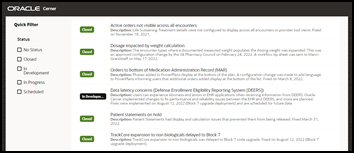

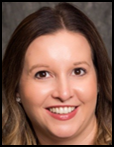

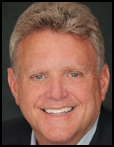

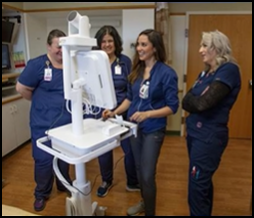

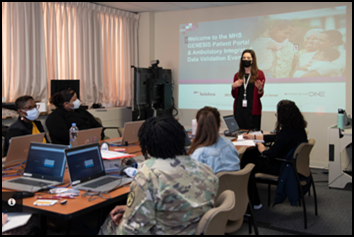

























A couple of years ago I had a conversation with one of my physician colleagues about how EHRs and MU…